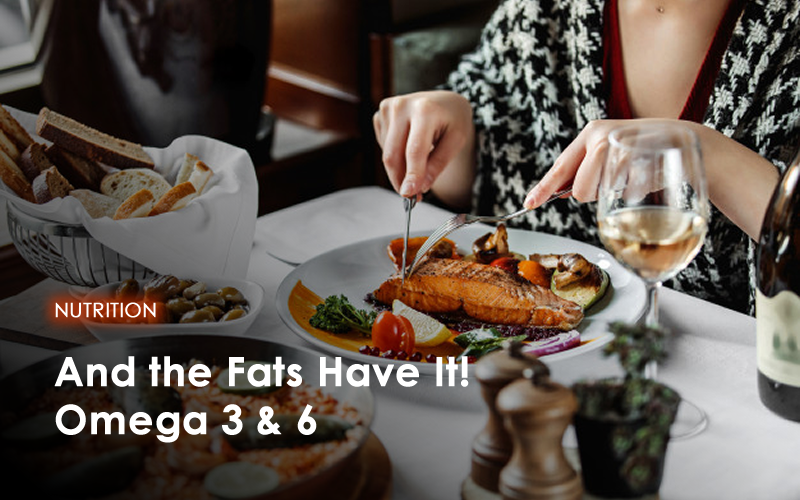Our grandmas new what was good for us – starting everyday with 2 tablespoons of Cod Liver Oil and FlaxSeed Oil. Check out why…
What are Fatty Acids?
The scientific definition of a Fatty Acid is, “a carboxylic acid consisting of a hydrocarbon chain and a terminal carboxyl group, especially any of those occurring as esters in fats and oils.” In layman’s terms, Fatty Acids are complex strands of molecules that our body breaks down for energy. So then, what are essential fatty acids?
We can break those down into saturated, monounsaturated, and polyunsaturated; or just Saturated and Unsaturated Fats. The Non-Essential is trans fats (the kind you see on nutrition labels). And know that Trans Fats are bad.
Unsaturated Fats
Omega 6 and Omega-3 Fatty Acids fall under Unsaturated Fats. The easiest way to discern between Saturated and Unsaturated Fats is that, with few exceptions, Saturated Fats are tightly packed and often are solid at room temperature. Unsaturated Fats are much more loosely condensed in their molecular structure and are generally liquids at room temperatures.
From here Unsaturated Fats can be split into two categories:
- Monounsaturated
- Polyunsaturated
Monounsaturated Fatty Acids are commonly found in:
- Olive Oil
- Peanut Oil
- Avocados (Millennials, are you reading this?)
- Most Nuts
- Most Seeds
Monounsaturated fats are healthy fats and have been known to support cardiovascular health. Polyunsaturated Fats are where Omega-6 Fatty Acids and Omega-3’s come into play.
Omega 3
Before we get into the breakdown of each, what are the differences between Omega-3’s and and Omega-6 fatty acids? At its core, the only difference between the two are in their structure. The last double bond in an Omega-6 is six carbons while the double bond for Omega-3’s is three carbons – hence the 3 and 6 (Omega is the final and 24th letter of the Greek alphabet, often symbolizing the end, thus the final carbons).
There are 3 different types of Omega 3’s (I’m gonna lose it if we break these down into more subcategories):
- Eicosapentaenoic acid (EPA)
- Docosahexaenoic acid (DHA)
- Alpha-linolenic acid (ALA)
Omega 6
Just like Omega 3’s there are 3 subcategories of Omega 6’s:
- Gamma-linolenic acid (GLA)
- Dihomo-gamma-linolenic acid (DGLA)
- Arachidonic acid (ARA)
Unlike Omega 3’s, Omega 6 Fatty Acids and their subcategories are more closely related. Trying to break them apart and pick out the differences would be like trying to dissect the differences between a Fuji and Gala Apple. At their core they both support a healthy immune system while maintaining healthy cholesterol levels already within a normal range.
We can find Omega 6’s in oils and nuts like:
- Safflower Oil
- Sunflower Oil / Seeds
- Pumpkin Seeds
- Walnuts
- Soybean Oil
- Corn Oil
However, because O6 bonds are just a touch more difficult to break down, without the aid of Omega 3’s, they can get a little risky. The main charge against Omega 6 Fats is that the body can convert the most common one, linolenic acid, into another fatty acid called arachidonic acid, and arachidonic acid is a building block for molecules that can promote a healthy inflammation response.
The American Heart Association suggests that instead of cutting back on Omega 6 Fatty Acids that we simply add more Omega 3’s to our current diet. Currently Americans consume Omegas at a rate of 25:1 in favor of Omega 6’s. According to the AHA recommendations, the optimal consumption rate is 4:1 – but remember, don’t cut back your Omega 6’s, just consume more Omega 3’s (the Institute of Medicine recommends getting 5% to 10% of your daily calories in just Omegas).
Find this article interesting and useful? Share it! 🙂
Our mission at PushPointe is to motivate, educate, and inspire you to live the fit life. If you don’t already subscribe to the world’s most popular health and fitness site, you’re invited to join thousands in our health conscious community. Have a comment, question, or idea? Email us at info@pushpointe.com.
Live the Fit Life. Subscribe to Our Bi-Weekly Email











